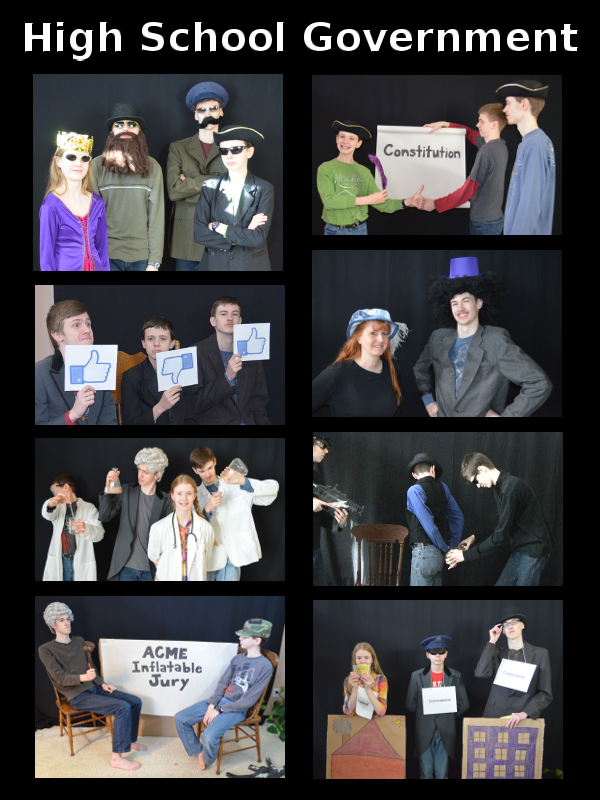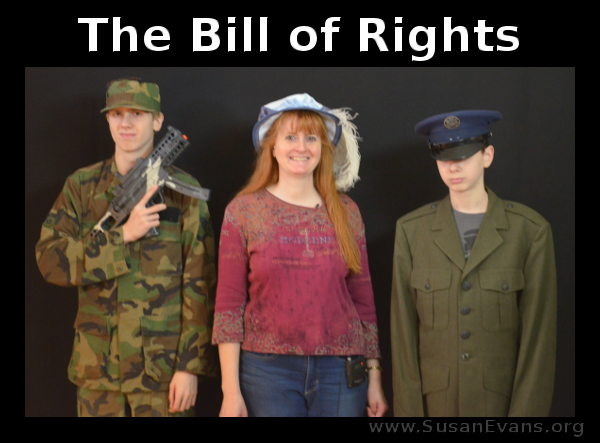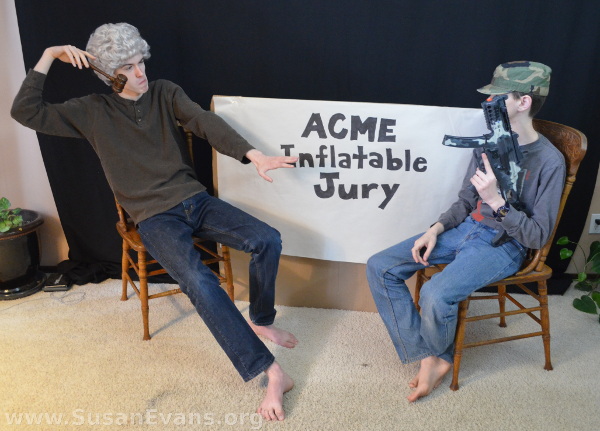If you are a parent of a student in high school, at some point your student has to take a class on government. To make the study of high school government more enjoyable, your student will LOVE these goofy videos and hands-on activities!
High School Government Videos:
- Types of Government: A fun video re-enacting dictatorship, oligarchy, monarchy, republic, true democracy, and anarchy. Includes my kids dressed up as playing cards.
- How a Bill Becomes a Law: My daughter (a bill) is pushed around by her brothers (Congress and the President) through the process of making a bill into a law.
- Preamble to the Constitution: A simple reading of the Preamble to the Constitution, with skits of various kinds to humorously bring to life each segment.
- Presidential Line of Succession: The President keels over, to be replaced by the Vice-President; who keels over to be replaced by the Speaker of the House; who keels over to be replaced…
- What are the Federal Executive Departments? Each of the Federal Executive Departments are dramatized by goofy kids in order to understand each department better.
- How the Judicial System Works: A Chicago gangster is counterfeiting money in his basement. Two federal agents break into his house and tell him he in under arrest. The remainder of the short video depicts how the judicial system works.
- The Bill of Rights: The first ten amendments of the U.S. Constitution are dramatized in this fun video.
- Make Your Own State Tourism Brochures: We take a break from all of our skits to show how to make a tourist pamphlet for your state. A couple of my kids have humorous pamphlets.
- Typical Campaign Promises: A silly skit by a candidate running for President, promising outlandish things that can never be fulfilled.
- How Government Gets Its Money: No matter what you do with your money, the government will want a piece of the action. Watch each scene from federal, state, and local taxes to see how the government holds out his hand for money to be forked over.
A couple of other hands-on activities go well with the study of high school government:
- Civitas Government Game: My kids loved this game, re-enacted it, and filmed it from the roof of my house. Make their risk worth it by watching their video, which was created, filmed, and edited entirely by my teen sons.
- Government Activity Books for High School: These Dover Publications books include pop-up Presidents, a 3-D White House model, and activity books that include other hands-on craft ideas. There are detailed coloring pages that can be used for notebooking, along with word searches, crossword puzzles, and code breakers.
Hopefully these skits and hands-on activities will make your students enjoy their study of high school government!







